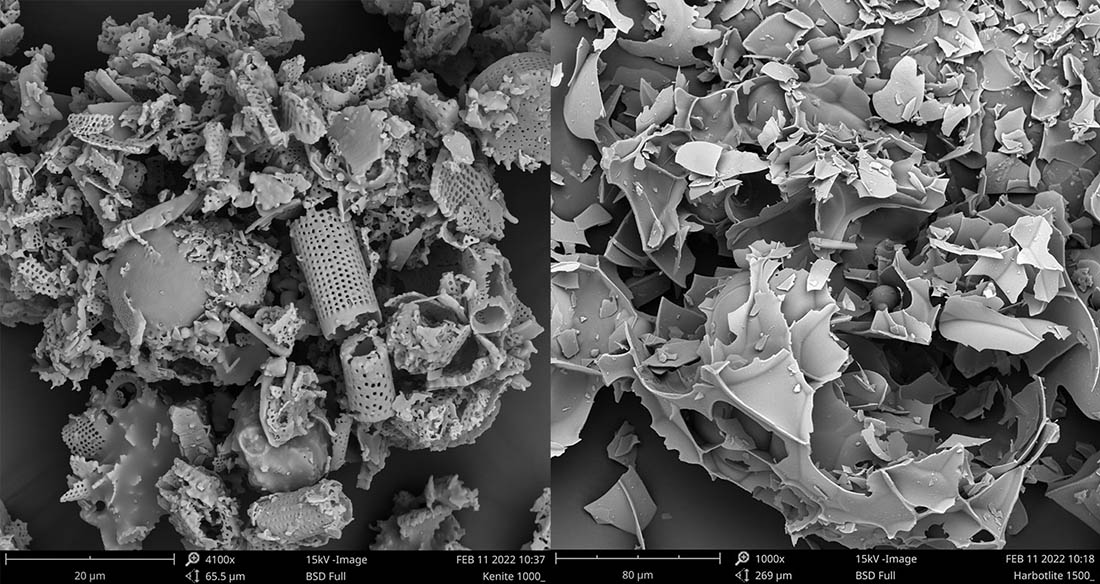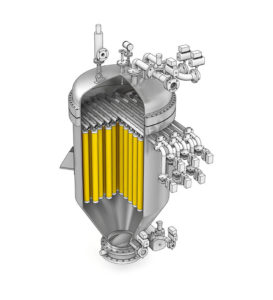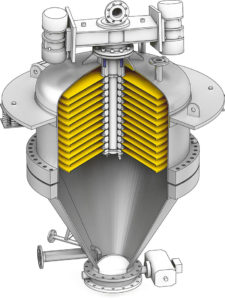
How can the process engineer successfully automate the clarification processes to improve filtration while minimizing operator exposure? Over my career in solid-liquid separation, I’ve seen many examples of process engineers struggling with clarifying process liquids. In one resin facility, the slurry was in a formaldehyde process and the “masked” operators were opening up a manual plate filter to dig out the cake. In another case, during the manufacturing of zeolites, the client added another set of bag filters when the filtrates following a vacuum belt filter remained cloudy. To help address these kinds of issues, I recently contributed an article to International Filtration News on clarifying process liquids.
The article, which can be downloaded from the P&ID website, published April 5, 2022, concludes that when confronted with a clarification process, the one thing not to do, is to repeat the solution with more bag filters, more filter aids and more throwaway cartridges. It’s better to take a different approach by conducting lab testing to analyze the cake structure, filter media, filtration pressure and cake thickness.
Approaching Process Liquid Clarification
A clarification system is employed after coarse-particle filtration or as a stand-alone system to remove or recover fine particles at low concentrations. The typical approach for fines removal/recovery has been bag filters, cartridge filters, manual plate filters and filter presses. A new approach is the use of automated, pressure-filtration, clarification technologies. The cake solids structure and the nature of the process determine which type of clarification system is appropriate for an application.
My article discusses two main types of automated clarification technologies, candle filters and circular pressure plate filters. I also go into detail about cake structure and lab testing, filter aids, and filter media.
The Candle Filter
A candle filter is a pressure vessel filled with tubular filters called filter candles (see Figure 1). A typical filter candle is comprised of a dip pipe to both flow the filtrate and pressurized gas, a perforated core with supporting tie rods, and a filter sock.

The Pressure Plate Filter
Like the candle filter, pressure plate filters (e.g. Figure 2) are comprised of filter plates contained within a pressure vessel. However, instead of vertical filter candles, the vessel contains circular-horizontal filter plates. These plates are conical-shaped slightly sloped, metal plates that support a coarse-mesh backing screen covered with filter cloth. An opening in the center of the plate allows the filtrate to travel between plates and out of the vessel. The filter cloth can be synthetic, as in the candle filter, or metallic as the cake discharge is by plate vibration or plate spinning.

Clarifying Process Liquids
This blog only summarizes the article. I hope you will read and download it from my articles page. When it comes to clarifying process liquids, there are many resources to do this work. You can explore materials from vendors, consultants, and published literature. With the data in hand, the process engineer can evaluate the different technologies available. It’s going to take time to determine the most reliable and cost-effective option for a specific clarification process.
If I’ve learned anything over my 40 years in this industry, there is no one-size-fits-all answer. I’d be happy to consult on your process liquid clarification conundrums. Let me know how I can help.

